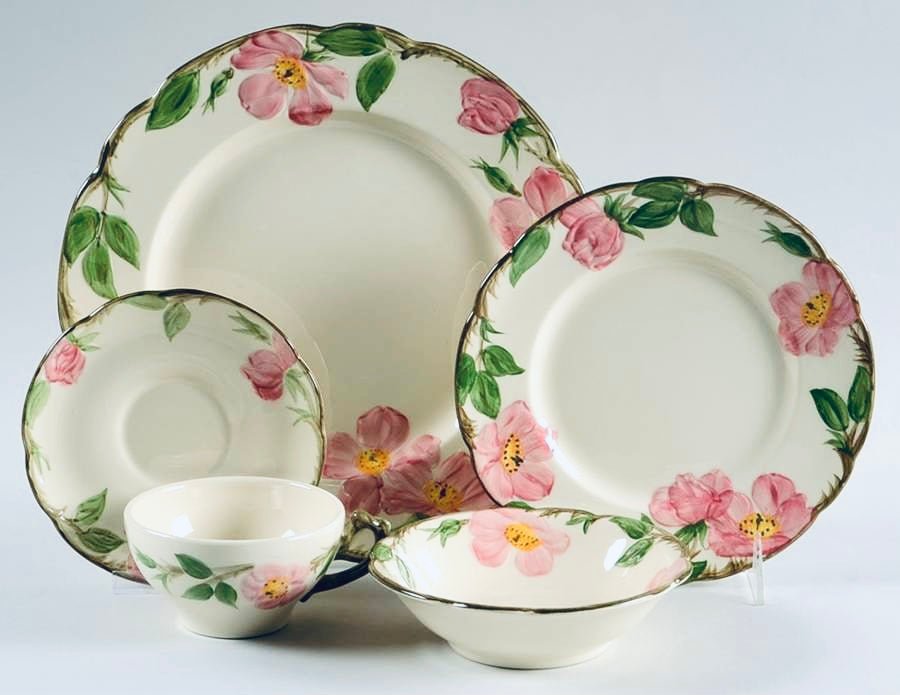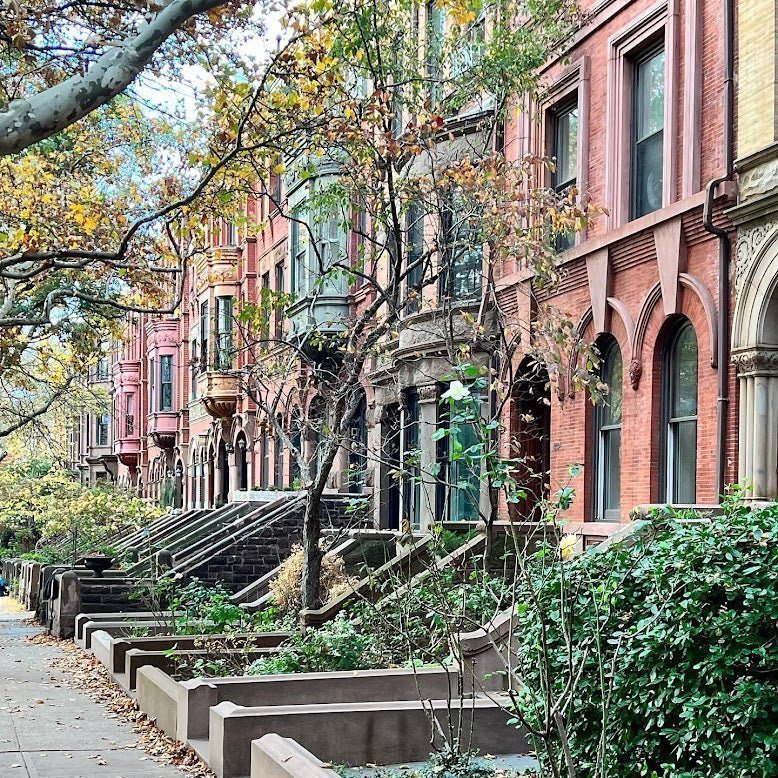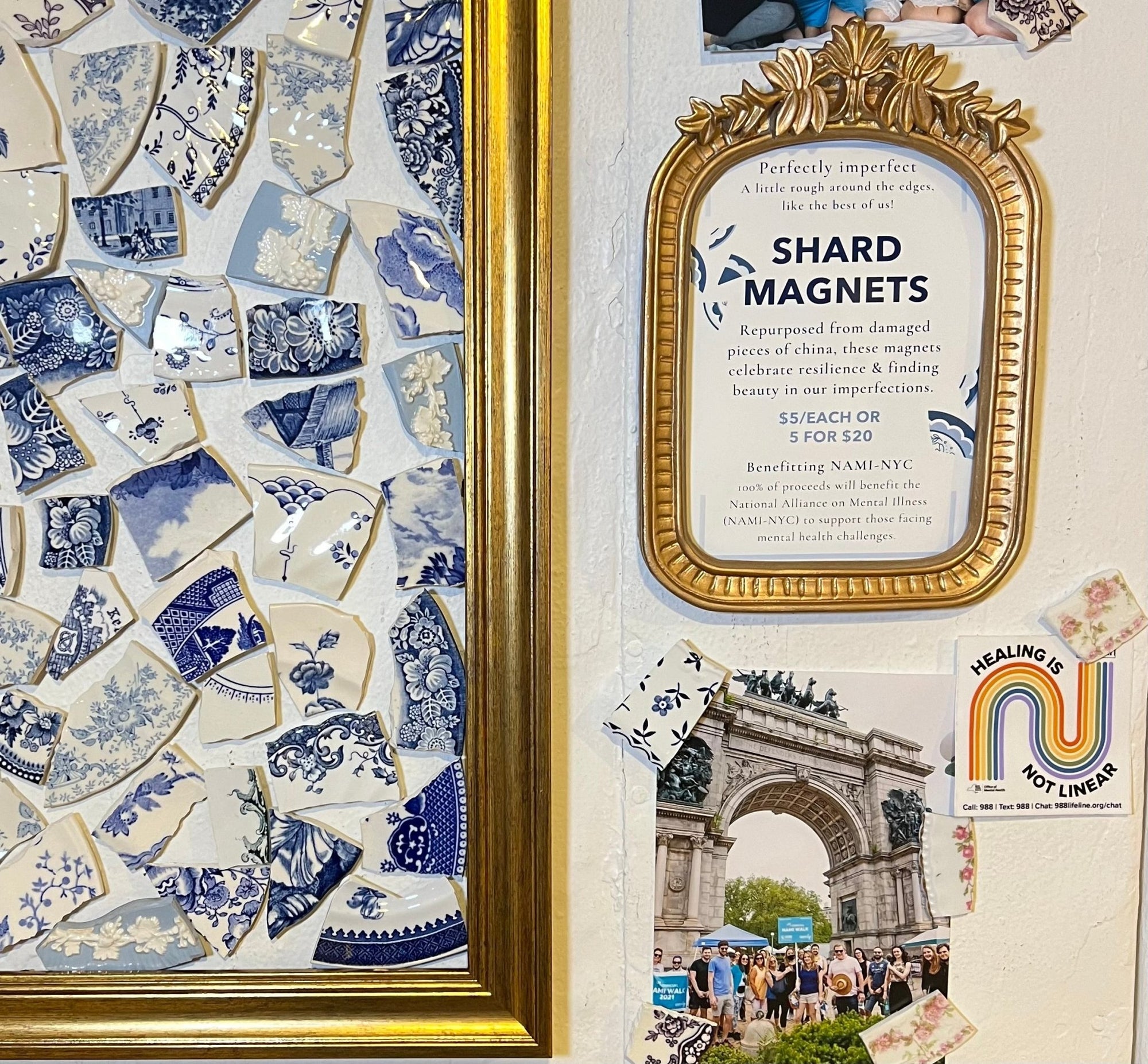Inspired by the beautiful pink rosa rugosa flower, Franciscan's Desert Rose dinnerware line was a beloved, highly successful china pattern from 1941 to 2004. Though no longer in production, it remains one of the most popular china patterns in American history and is still highly sought after by collectors.
What's the story behind the iconic Desert Rose pattern?
Desert Rose was first introduced in 1941 by Gladding, McBean & Company, which was known for producing casual dinnerware in the style of Mexican folk pottery. It was created by contract designer Annette Honeywell (1902-1959) of Los Angeles in a style considered to be typical of Asian- inspired Southern California décor of the early 20th Century.
With hand-painted clusters of vibrant pink flowers, olive green stems on a cream background, and brown branches gracefully forming the trim of each piece, Desert Rose has a definitively rustic California aesthetic.
Interestingly, the rosa rugosa, the recognizable flower that's central to Desert Rose's design, is native to the Midwest and northern sections of the United States. The pattern was named Desert Rose, however, after a flower native to California to give it the West Coast cachet that was so coveted at the time.
How did Desert Rose dinnerware become popular?
Desert Rose china became popular for its unique design. The bright pink and green hues of the pattern gave it a vintage charm that was unlike any other dinnerware patterns in circulation at the time.
Franciscan’s pattern got a significant boost in popularity thanks to widescale advertising campaigns throughout the 1940s and 1950s that featured Hollywood celebrities such as Joan Crawford, Greer Garson and Dorothy Lamour. In 1964, the sixty millionth piece was produced and First Lady Jacqueline Kennedy chose Franciscan Desert Rose for use in the White House.
Desert Rose is considered to be durable and resistant to chipping (though this is not always true in our experience!). Collectors believe that these attributes contribute to the pattern’s staying power, especially among those who used it for everyday dining.
Production of Desert Rose china from 1984 to 2000
Desert Rose china stopped being produced by Franciscan in the 1980s due to increasing costs of raw materials and production. In 1984, Franciscan Ceramics was sold to Josiah Wedgwood and Sons Ltd. Following the sale, production of Desert Rose was moved to England. In 2000, production again moved—this time, to China (the country, that is!).
Several unfortunate changes were made to the pattern after production left the United States. Most noticeably, some of the finer details like the scalloped edges and pronounced reliefs of the flowers, leaves, and branches faded away.
You can easily spot some of the differences in this picture comparing 3 dinner plates from the three countries where Desert Rose was produced. Photo credit to blogger Jerry Garrett.

If you’re looking to add to your collection or gift something to a lover of Desert Rose, we recommend that you look for backstamps indicating that the piece was made in the U.S.A.
Is Franciscan Desert Rose china still popular today?
The rise of eBay in the 2000s hurt sales of Desert Rose china by flooding the market with low-cost, low-quality knockoffs of the pattern. This caused many people to be wary of purchasing Desert Rose china and damaged the reputation of the original pattern. The demand for the pattern also began to decline as tastes in dinnerware patterns changed with the times.
After decades of popularity, Franciscan Desert Rose was discontinued in 2013. Despite this, Franciscan Desert Rose china is still popular today. The pattern has become a classic, and many people are still drawn to its unique design and vintage charm.
Many of our customers seek out and request our handcrafted designs made from Desert Rose patterns.
The enduring popularity of Franciscan Desert Rose China is a testament to its timeless design and superior craftsmanship. It still holds a special place in the hearts and memories of many and will forever be remembered as a beloved mainstay in American households circa mid-to-late 20th century (and beyond!).
We'd love to hear whether Desert Rose lives on in your home. Do you use it? How? If not, why? Leave a note in the comments below.
We can't wait to tell you about how one of of our customers upcycled her family's set into pieces she and her family use and enjoy... sign up for our mailing list below to get updated when our next post comes out!
Resources consulted:
- www.gmcb.com/franciscan
- https://tutuhut.com/how-much-is-franciscan-desert-rose-china-worth/
- https://www.gr8ampottery.com/desert-rose.html
- https://jerrygarrett.wordpress.com/2021/05/17/el-rancho-the-surprising-origins-of-desert-rose-dinnerware/




Comments
My Granfmother left me 6 large boxes of this dinner Ware made in California. There are alot of the extra pieces. I’m going to get it all out to see what I have but I think it’s an 8 piece set with all the extras. I’m looking to sell but I don’t know where to go to do that. Any ideas?
Some of these dishes were made with a lead component which is harmful to young children. Those made before the 80s should be checked out.
I purchased my from a house sale, service for 6, $40.00 i love them, & have been adding to them when I see them! Some say USA& some say England.
My mother got her set in the 50s and filled in with more pieces in the 80s and 90s. There is a distinct difference in the older and newer pieces: the newer pieces are heavier and thicker and the color is not as bright. I now have all the pieces and I love them all. I use them everyday, just like when I was growing up.
I have loved Desert Rose for at least 30 yrs, I use it everyday. It’s wonderful. I’ve even bought pieces at estate sales. I’ve already promised it to someone younger when I’m too old to cook. Lol
I inherited my set from my mother who lived in the US from 1960-2001. She brought it with her to Denmark and I use it in my summer cabin. I think it is a bit rustic and perfect for my use here. I match it with an unknown bunch of smaller green ceramic plates, bought used. The story goes, it was bought by a Danish woman who was going to marry an American in 1947. He neglected to tell her that he was divorced and she took her dowry and returned home. Maybe she also was homesick. So for very little money I bought what was left of the green plates and soup bowls. It matches Desert Rose so well. I bought a tea pot set for my mother while she was in a nursing home and we used it for tea. I realized that it was made in China, but never told her. My mother had lots of tea cups. Even though I think she used them for coffee in the US.
I LOVE my desert rose. I bought a service for 8 in 2001 from a local department store when a dear relative left me a very small remembrance, to celebrate my divorce and to “allow” my former spouse to “take” all the everyday dishes as spoils from the marriage. Haha joke was on him, he got the crappy Walmart stuff, I still have a gorgeous set of Desert Rose I use every day. Over the years, I have added nearly every piece imaginable via thrifting and craigslist, I have a large stack of serious vintage stuff put away for fancy dinners like when we break out the sterling silver forks, but mostly we use up what we have. We use it up. If it chips or cracks, it goes into the “chip/crack” box for future mosaic use.
We have 2 complete service for 8 bought the last year produced here in the USA. Still in original boxes. We also have extras like salt and pepper, sugar bowl and creamer, platters etc. Curious as to value
I inherited a set from my Grandmother Mary and she used it every day. I have many fond memories of these dishes from my childhood and hope to pass sweet memories along to my grandchildren. We use it every day and if only seems to break if you drop it.
Hello! I was wondering if you were familiar with the “Wild Rose” set from Villeroy and Bosh? I’ve seen them at flea markets around Europe and have always been curious as to why it looks so similar to the Desert Rose one. I assume the Desert preceeds the Wild.